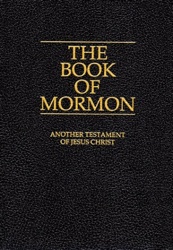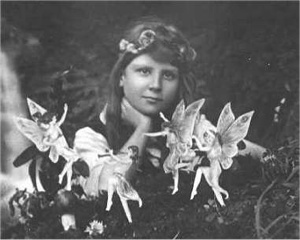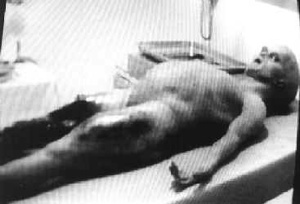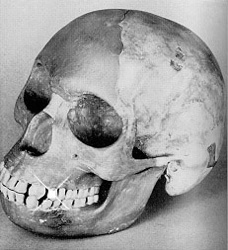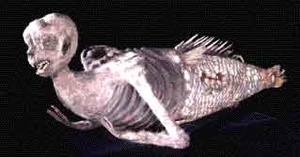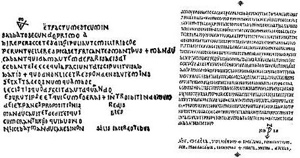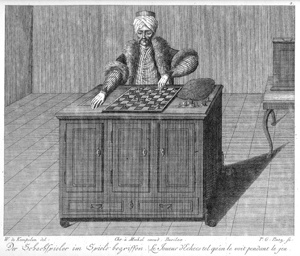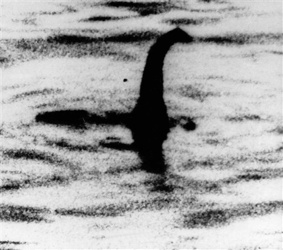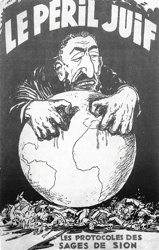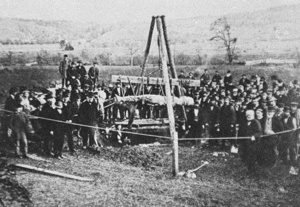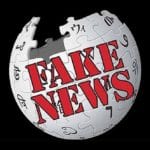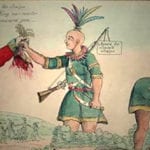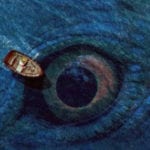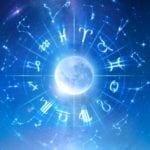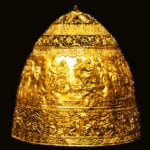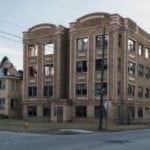 History
History  History
History  Weird Stuff
Weird Stuff 10 Superstitious Beliefs That Once Consumed Entire Cultures
 History
History 10 Bizarre Friendly Fire Incidents in Military History
 Technology
Technology 10 Modern Technologies That Accidentally Imitate Ancient Magic
 Mysteries
Mysteries 10 Mysteries of the Human Genome
 Weird Stuff
Weird Stuff 10 Things So Rare They’ve Only Been Found Once
 History
History 10 Legends Whose Last Moments Undid Their Glory
 Health
Health 10 Futuristic Ideas to Treat Common Medical Problems
 Weird Stuff
Weird Stuff Ten Surreal Attempts to Reverse Baldness
 Facts
Facts 10 U.S. Government Contingency Plans for the Unthinkable
 History
History 10 Odd Things Colonial Americans Kept at Home
 Weird Stuff
Weird Stuff 10 Superstitious Beliefs That Once Consumed Entire Cultures
 History
History 10 Bizarre Friendly Fire Incidents in Military History
Who's Behind Listverse?

Jamie Frater
Head Editor
Jamie founded Listverse due to an insatiable desire to share fascinating, obscure, and bizarre facts. He has been a guest speaker on numerous national radio and television stations and is a five time published author.
More About Us Technology
Technology 10 Modern Technologies That Accidentally Imitate Ancient Magic
 Mysteries
Mysteries 10 Mysteries of the Human Genome
 Weird Stuff
Weird Stuff 10 Things So Rare They’ve Only Been Found Once
 History
History 10 Legends Whose Last Moments Undid Their Glory
 Health
Health 10 Futuristic Ideas to Treat Common Medical Problems
 Weird Stuff
Weird Stuff Ten Surreal Attempts to Reverse Baldness
 Facts
Facts 10 U.S. Government Contingency Plans for the Unthinkable
Top 10 Famous Hoaxes
Throughout the years many people have perpetrated hoaxes – often for publicity, and sometimes just for the hell of it. Of all the hoaxes through history, the ten in this list are the most famous. In at least two cases (the Book of Mormon, and the Priory of Sion) millions of people have been fooled – or continue to be fooled! In no particular order, here they are:
1. The Book of Mormon 1830
The Book of Mormon is considered by the Church of Jesus Christ of Latter Day Saints to be a divinely inspired book of equal value to the Bible. Joseph Smith, founder of the Mormon religion, claimed that he was directed by an Angel to a hill near his home in which he found golden tablets containing the full text of the book. With the books he found two objects called the Urim and Thummim which he described as a pair of crystals joined in the form of a large pair of spectacles. Unfortunately, after Smith finished his translation, he had to return the tablets to the Angel, so there is no physical evidence that they ever existed.
The book refers to a group of Jews that moved to and settled in America where Jesus visited them. Some segments of the Book of Mormon contain sections copied directly from the King James version of the Bible – the Bible that was most popular at the time and used by Joseph Smith. One example is Mark 16:15-18 which is quoted nearly word-for-word in Mormon 9:22-24. In addition, the book mimics the literary and linguistic style of the King James Bible. Linguistic experts have stated that the entire book is written by one man, and is not written by a combination of authors (the prophets as claimed by Smith). Additionally, the book refers to animals and crops that did not exist in America until Columbus arrived: ass, bull, calf, cattle, cow, domestic goat, horse, ox, domestic sheep, sow, swine, elephants, wheat, and barley.
The most compelling proof that Joseph Smith was perpetuating a fraud is the Book of Abraham. In 1835 Smith was able to use his Urim and Thummim to translate some Egyptian scrolls that he was given access to (at that time no one could read hieroglyphics). Upon inspection, Smith declared that they contained the Book of Abraham. He promptly translated the lot and it was accepted as scripture by the church. The scrolls vanished and everyone thought the story would end there. But it didn’t – in 1966 the original scrolls were found in the New York Metropolitan Museum of Art. The scrolls turned out to be a standard Egyptian text that was often buried with the dead. To this day the Book of Abraham is a source of discomfort for the Mormon religion.
Read it for yourself! Buy The Book of Mormon at Amazon.com!
2. The Cottingley Fairies 1917
The Cottingley Fairies are a series of five photographs taken by Elsie Wright and Frances Griffiths, two young cousins living in Cottingley, near Bradford, England, depicting the two in various activities with supposed fairies. Elsie was the daughter of Arthur Wright, one of the earliest qualified electrical engineers. She borrowed her father’s quarter plate camera and took photos in the beck behind the family house. When Mr. Wright, upon developing the plates, saw fairies in the pictures, he considered them fake. After the taking of the second picture, he banned Elsie from using the camera again. Her mother, Polly, however was convinced of their authenticity.
In the summer of 1919, the matter became public and Sir Arthur Conan Doyle (author of Sherlock Holmes) wrote an article for a leading magazine claiming that they were authentic. Not everyone was taken in by the fraud, as this statement from a leading Doctor at the time attests:
“On the evidence I have no hesitation in saying that these photographs could have been `faked’. I criticise the attitude of those who declared there is something supernatural in the circumstances attending to the taking of these pictures because, as a medical man, I believe that the inculcation of such absurd ideas into the minds of children will result in later life in manifestations and nervous disorder and mental disturbances…”
For fifty years the girls avoided publicity and the hoax continued to be believed by many. In late 1981 and mid 1982 respectively, Frances Way (née Griffiths) and Elsie Hill (née Wright), who took the photographs admitted that the first four pictures were fakes. Speaking of the first photograph in particular, Frances has said: “I don’t see how people could believe they’re real fairies. I could see the backs of them and the hatpins when the photo was being taken.” Both of the girls claimed, right up to their deaths, that the fifth photo was, in fact, authentic.
3. Alien Autopsy 1995
In 1995, Ray Santilli instigated a wide reaching “alien autopsy” controversy when he claimed to possess footage taken in a tent by a U.S. military shortly after the 1947 Roswell UFO incident. Santilli first presented his film to an invited audience of media representatives, UFOlogists and other dignitaries at the Museum of London on 5 May 1995. Although the broadcast version did not show the actual “autopsy”, video editions have the complete and unedited film, plus previously unreleased footage of wreckage presented as the remains of the alien craft reported to have crashed in Roswell. The show features interviews with experts on the authenticity of the film.
On April 4, 2006, two days prior to the UK release of Alien Autopsy Ray Santilli and fellow producer Gary Shoefield announced that their film was only partially real (a “few frames,” in their words), while the rest was a reconstruction of twenty-two rolls of film, averaging four minutes in length, which Santilli had viewed in 1992 but which had subsequently degraded from humidity and heat. According to Santilli, a set was constructed in the living room of an empty flat in Rochester Square, Camden Town, London. John Humphreys, an artist and sculptor, was employed to construct two dummy alien bodies over a period of three weeks, using casts containing sheep brains set in jelly, chicken entrails and knuckle joints.
4. Piltdown Man 1912
The “Piltdown Man” is a famous hoax consisting of fragments of a skull and jawbone collected in 1912 from a gravel pit at Piltdown, a village near Uckfield, East Sussex. The fragments were thought by many experts of the day to be the fossilised remains of a hitherto unknown form of early human. The Latin name Eoanthropus dawsoni (“Dawson’s dawn-man”, after the collector Charles Dawson) was given to the specimen.
The Piltdown hoax is perhaps the most famous archaeological hoax in history. It has been prominent for two reasons: the attention paid to the issue of human evolution, and the length of time (more than 40 years) that elapsed from its discovery to its exposure as a forgery. It was exposed in 1953 as a forgery, consisting of the lower jawbone of an orangutan combined with the skull of a fully developed, modern man. The identity of the Piltdown forger remains unknown, but suspects have included Dawson, Pierre Teilhard de Chardin and Arthur Conan Doyle as well as numerous others.
From the outset, there were scientists who expressed skepticism about the Piltdown find. G.S. Miller, for example, observed in 1915 that “deliberate malice could hardly have been more successful than the hazards of deposition in so breaking the fossils as to give free scope to individual judgment in fitting the parts together.” In the decades prior to its exposure as a forgery in 1953, scientists increasingly regarded Piltdown as an enigmatic aberration inconsistent with the path of hominid evolution as demonstrated by fossils found elsewhere.
5. Feejee Mermaid 1842
The Feejee Mermaid was presented as a mummified body of something, supposedly a creature that was half mammal and half fish (like a grotesque version of normal mermaid stories). The original exhibit was popularized by circus great P.T. Barnum, but has since been copied many times in other attractions, including the collection of famed showman Robert Ripley. The original exhibit was shown around the United States, but was lost in the 1860s when Barnum’s museum caught fire. The exhibit has since been acquired by Harvard University’s Peabody Museum of Archaeology and Ethnology and is currently housed in the museum’s attic storage area.
The Fiji mermaid came into Barnum’s possession via his Boston counterpart Moses Kimball, who brought it down to Barnum in late spring of 1842. On June 18, Barnum and Kimball entered into a written agreement to exploit this “curiosity supposed to be a mermaid.” Kimball would remain the creature’s sole owner and Barnum would lease it for $12.50 a week. Barnum christened his artefact “The Feejee Mermaid”.
In reality, the mermaid was a gaff, the work of an Indonesian craftsman using either papier-mâché and materials from exotic fish, or the tail of a fish and a torso of a baby orangutan, stitched together with the head of a monkey
6. The Priory of Sion 1956
The Priory of Sion has been characterized as anything from the most influential secret society in Western history to a modern Rosicrucian-esque group, but, ultimately, has been shown to be a hoax created in 1956 by Pierre Plantard, a pretender to the French throne. The evidence presented in support of its historical existence is not considered authentic or persuasive by established historians, academics, and universities, and the evidence was later discovered to have been forged and then planted in various locations around France by Plantard and his associates.
Between 1961 and 1984 Plantard contrived a mythical pedigree of the Priory of Sion claiming that it was the offshoot of the monastic order housed in the Abbey of Sion, which had been founded in the Kingdom of Jerusalem during the First Crusade and later absorbed by the Jesuits in 1617. Plantard hoped that the Priory of Sion would become an influential cryptopolitical irregular masonic lodge dedicated to the restoration of chivalry and monarchy, which would promote Plantard’s own claim to the throne of France.
The priory recently gained interest again (despite easily obtainable proof that it is a fake) through the publication of the book The Davinci Code which the author, Dan Brown, claims to be fact (proving that he lied outright about his alleged years of research for the book).
7. The Turk 1717
The Turk was a fake chess-playing machine of the late 18th century, promoted as an automaton but later proved to be a hoax. The Turk made its debut in 1770 at Schönbrunn Palace. Its owner, Kempelen addressed the court, presenting what he had built, and began the demonstration of the machine and its parts. With every showing of the Turk, Kempelen began by opening the doors and drawers of the cabinet, allowing members of the audience to inspect the machine. Following this display, Kempelen would announce that the machine was ready for a challenger.
Kempelen would inform the player that the Turk would use the white pieces and have the first move. Between moves the Turk kept its left arm on the cushion. The Turk could nod twice if it threatened its opponent’s queen, and three times upon placing the king in check. If an opponent made an illegal move, the Turk would shake its head, move the piece back and make its own move, thus forcing a forfeit of its opponent’s move. Observers of the Turk would state that the machine played aggressively, and typically beat its opponents within thirty minutes.
The Turk was in fact a mechanical illusion that allowed a human chess master to hide inside and operate the machine. With a skilled operator, the Turk won most of the games played. The apparatus was demonstrated around Europe and the Americas for over 80 years until its destruction by fire in 1854, playing and defeating many challengers including statesmen such as Napoleon Bonaparte and Benjamin Franklin.
8. Loch Ness – the Surgeon’s Photo 1934
One of the most iconic images of Nessie is known as the ‘Surgeon’s Photograph’ which many consider to be good evidence of the monster, although doubts about the photograph’s authenticity were expressed from the beginning. The image was revealed as a hoax in the 1990s. The photographer, a gynecologist named Robert Kenneth Wilson, never claimed it to be a picture of the monster. He merely claimed to have photographed “something in the water”. The photo is often cropped to make the monster seem huge, while the original uncropped shot shows the other end of the loch and the monster in the center.
Just a year before the hoax was revealed, the makers of Discovery Communications’ documentary Loch Ness Discovered did an analysis of the uncropped image and found a white object evident in every version of the photo, implying that it was on the negative. “It seems to be the source of ripples in the water, almost as if the object was towed by something”, the narrator said. “But science cannot rule out it was just a blemish on the negative,” he continued. Additionally, analysis of the full photograph revealed the object to be quite small, only about two to three feet long.
Read about more famous photo hoaxes in Listverse.com’s Epic Book of Mind-Boggling Lists at Amazon.com!
9. The Protocols of the Elders of Zion 1890
The Protocol of the Elders of Zion is a text that purports to describe a Jewish and Masonic plot to achieve world domination. It is one of the most well known and discussed examples of literary forgery. Numerous independent investigations have concluded it to be either a plagiarism or a hoax. The Protocols is widely considered to be the beginning of contemporary conspiracy theory literature, and takes the form of an instruction manual to a new member of the “elders,” describing how they will run the world through control of the media and finance, and replace the traditional social order with one based on mass manipulation.
Continued usage of the Protocols as an antisemitic propaganda tool substantially diminished with the defeat of the Nazis in World War II. It is still frequently quoted and reprinted by some anti-Semitic circles, and is sometimes used as evidence of an alleged Jewish cabal, especially in the Middle East. Elements of the text in the Protocols appears to be plagiarized from an 1864 pamphlet, Dialogue in Hell Between Machiavelli and Montesquieu, written by the French satirist Maurice Joly. Joly’s work attacks the political ambitions of Napoleon III using Machiavelli as a diabolical plotter in Hell as a stand-in for Napoleon’s views.
Interestingly, many of the protocols aims have been achieved. For example: Universal suffrage, wide acceptance of pornography, the spread of Darwinism, Socialism, and Materialism.
10. The Cardiff Giant 1869
The Cardiff Giant, one of the most famous hoaxes in American history, was a 10-foot-tall (3m) “petrified man” uncovered on October 16, 1869 by workers digging a well behind the barn of William C. “Stub” Newell in Cardiff, New York. Both it and an unauthorized copy made by P.T. Barnum are still on display. The Giant was the creation of a New York tobacconist named George Hull. Hull, an atheist, decided to create the giant after an argument with a fundamentalist minister named Mr. Turk about a passage in Genesis that stated that there were giants who once lived on earth.
Hull hired men to carve out a 10-feet-long, 4.5 inches block of gypsum in Fort Dodge, Iowa, telling them it was intended for a monument of Abraham Lincoln in New York. He shipped the block to Chicago, where he hired a German stonecutter to carve it into the likeness of a man and swore him to secrecy. Various stains and acids were used to make the giant appear to be old and weather beaten, and the giant’s surface was beaten with steel knitting needles embedded in a board to simulate pores. When the giant had been buried for a year, Newell hired two men, Gideon Emmons and Henry Nichols, ostensibly to dig a well. When they found the Giant, one of them has been attributed to saying “I declare, some old Indian has been buried here!”.
The giant drew such crowds that showman P.T. Barnum offered $60,000 for a three-month lease of it (in his memoirs he said he wanted to buy it). When the syndicate turned him down he hired a man to covertly model the giant’s shape in wax and create a plaster replica. He put his giant on display in New York, claiming that his was the real giant and the Cardiff Giant was a fake. On February 2, 1870 both giants were revealed as fakes in court. The judge ruled that Barnum could not be sued for calling a fake giant a fake.
